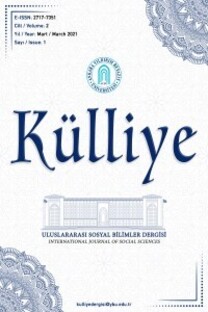KARIŞIK MAHALLELER İÇİN İKİNCİ EV SAHİPLERİNİN ETKİLERİ
Mevcut literatürde ev sahibi olup evinde yaşayan, evini kiraya veren ve kiracıların birbirleriyle olan ilişkileri ve bu grupların benzerlik ve farklılıkları açısından günlük yaşamlarının organizasyonu geniş bir şekilde tartışılmaktadır. Ancak, aynı bölgede ikinci ev sahibi olarak kısa süre kalan kişilerin oynadığı rol açısından yukarıdaki hususları analiz etmek için çok az araştırma yapılmıştır. İkinci ev sahipleri ile oluşturulan ilişkiler diğer konut sahibi ve kiracılar acısından nasıldır? Bu proje, konut sahipliği statüsünden hareketle, kısa süreliğine bir yerde yaşama üzerinden mekân ve aidiyet oluşturma sürecine ışık tutuyor. Buna ek olarak, bir yerde yaşama süresi daha az önemli hale geliyor. Ayrıca bu araştırmayı literatürdeki mevcut çalışmalarla karşılaştırınca, yer, konum kişisel ilgi alanları, tercihler, yaş ve nesil farklılıkları yukarıda bahsettiğimiz farklı grupların tercihlerini etkilemektedir. Bu projede, Southampton'daki Ocean Village bölgesini örneklem seçerek araştırma sorusu cevaplanmıştır. Gelişmekte olan ve 1980’lerden beri bir dönüşüm halinde olan bu bölgede ofis, konut ve eğlence tesisleri bir arada mevcuttur. Bu araştırma, nitel ve nicel verilere dayanmaktadır. Bulgular, kısa süreliğine bu bölgede konaklayanların diğer gruplarla geliştirdikleri ilişkilerin sadece ev sahibi olup olmama ve aynı bölgede aynı oranda zaman harcayıp harcamama üzerinden değil onların ilgileri ve kullandıkları yeni iletişim araçları (internet, sosyal medya) da etkili olmuştur.
Anahtar Kelimeler:
Ev, konum, sahil, ikinci ev, Ocean Village
IMPACTS OF SECOND HOMEOWNERSHIP FOR MIXED NEIGHBOURHOODS
The impact of residential status, becoming a landlord, owner-occupier or tenant, is mostly discussed in the literature in terms of their relationships with each other and the organisation of their daily life in terms of its similarities and differences. However, there has been little research to analyse the above aspects in terms of the role of short-term stayers as second homeowners. How does the relationship to the second homeowners vary with resident status? This project sheds new light on the neglected issue of short-term rentals in the creation of place and belonging in a specific area, as related to residential status. In addition, while tenure status become less visible, when comparing this research with the existing work in the literature, location, personal interests, preferences, age and generational differences influence the different tenure groups’ preferences. This paper considers Ocean Village in Southampton as a case study. This redevelopment waterfront area comprises businesses, residential and leisure facilities at the same time and it has been ongoing since the 1980s. This research is based on both quantitative and qualitative data. The findings illustrate that short-term stayers have a significant impact on the creation of different tenure groups’ place and belonging.
Keywords:
Home, location, waterfront, second homeownership, Ocean Village,
___
- Coppock, J. T. (ed.) (1977a). Second Homes, Curse or Blessing? Oxford: Pergamon Press.
- Coppock, J. T. (1977b). Second homes in perspective, in: J. T. Coppock (ed.), Second Homes, Curse or Blessing? Oxford: Pergamon Press, 1–15.
- Coppock, J. T. (1977c). Social implications of second homes in mid- and north Wales, in J. T. Coppock (ed.), Second Homes, Curse or Blessing? Oxford: Pergamon Press, 147–153.
- Crow, G. (2002). Social Solidarities: Theories, Identities and Social Change, London: Open University Press.
- Elias, N. and Scotson, J.L (1994). The Established and the Outsiders, London: Sega.
- Ellingsen, W. (2017) Rural Second Homes: A Narrative of De-Centralisation, Sociologia Rurals, 57(2):229-245.
- DiPasquale, D.-Glaeser, E.L. (1999). Incentives and Social Capital: Are Homeowners Bet-ter Citizens. Journal of Urban Economics, 45(2), 354-384.
- Ronald, R. (2008). The ideology of home ownership: Homeowner societies and the role of housing, New York: Palgrave Macmillan.
- Gallent, N., (2014) The Social Value of Second Homes in Rural Communities, Housing, Theory and Society, 31(2): 174-191.
- Hall, C.M.-Müller, D. K. (eds.). (2004). Tourism, mobility and second homes. Between elite landscapes and common ground. Clevedon: Channel View Publications.
- Mallett, S. (2004). Understanding home: A critical review of the literature. The Sociological Review, 52(1), 62-89.
- Massey, D. (2005). For Space, London: Sage.
- Norris, M.-Winston, N. (2010). Second-Home Owners: Escaping, Investing or Retiring? Tourism Geographies, 12:4, 546-567.
- Paris, C. (2007) Second Homes in Northern Ireland: Growth, Impact and Policy Implications (Belfast: Northern Ireland Housing Executive).
- Paris, C. (2009) Re‐positioning Second Homes within Housing Studies: Household In-vestment, Gentrification, Multiple Residence, Mobility and Hyper‐consumption, Housing, Theory and Society, 26:4, 292-310.
- Shucksmith, M. (1981) No Homes for Locals? Farnborough: Gower Press.
- Shucksmith, M. (1990) Housebuilding in Britain’s Countryside. London: Routledge.
- Shucksmith, M. (1991) ‘Still no homes for locals? Affordable housing and planning con-trols in rural areas’, in Champion, T. and Watkins, C. (eds) People in the Countryside: Studies of social change in rural Britain. London: Paul Chapman: 53-66.
- Saunders, P. (1990). A Nation of Home Owners, London: Unwin Hyman.
- Saunders, P. (2016). Restoring a Nation of Home Owners, London: Civitas.
- Savage, M. et al. (2005). Globalization and Belonging, London: Sage.
- Savage, M. (2008). Histories, Belongings, Communities. International Journal of Social Research Methodology, 11(2), 151–162.
- Savage, M. (2010). Identities and Social Change in Britain since 1940, Oxford: Oxford University Press.
- Urry, J. (1995). Consuming Places. London: Routledge.
- Wellman, B. (2001) Physical Place and Cyber-Place: Changing portals and the rise of net-worked individualism, International Journal for Urban and Regional Research, 25(2): 227-252.
- Watt, P. (2009). Living in an oasis: Middle-class disaffiliation and selective belonging in an English suburb. Environment and Planning, 41: 2874–92.
- Department for Communities and Local Government: Tenure trends and cross tenure analy-sis: Table FT1101 (S101): Trends in Tenure, 2016.
- https://www.dailyecho.co.uk/news/11028794.21-long-forgotten-nights-clubs-in-southampton/ [Accessed 29.01.2020]
- Yayın Aralığı: Yılda 2 Sayı
- Başlangıç: 2020
- Yayıncı: Sıddık Çalık
Sayıdaki Diğer Makaleler
KIBRIS CUMHURİYETİ’NİN KURULUŞ SÜRECİ VE KIBRIS BARIŞ HAREKÂTI’NDA JANDARMA BİRLİKLERİNİN ROLÜ
Hasan ACAR, Ahmet Tahsin DİLMAÇ
AZERBAYCAN TÜRKÇESİNDEKİ KADIN GİYSİ ADLARI ÜZERİNE BİR İNCELEME
KARIŞIK MAHALLELER İÇİN İKİNCİ EV SAHİPLERİNİN ETKİLERİ
ŞEFİKA GASPIRALI'NIN ALEM-İ NİSVAN DERGİSİ ÜZERİNE BİR İNCELEME VE SİSTEMATİK İNDEKS
AHMED MEÂBÎ'NİN TASAVVUFÎ TERCÜMESİ: TERCEME-İ EZHÂRÜ’L-AKDESİYYE
Mustafa Yasin BAŞÇETİN, Yunus Emre UZUN
CENGİZ AYTMATOV'DA AHLAKİ BAĞLAM ÇERÇEVESİNDE KARAKTER TAHLİLİ
